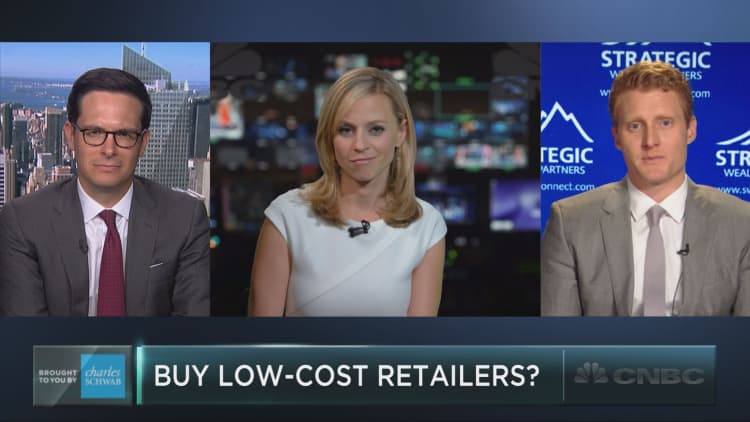
To deliver on its latest promise to lower prices across its stores, Wal-Mart is squeezing every penny out of the costs required to move and store its merchandise across the U.S.
That includes testing the use of proprietary drone technology in its 1.2 million-square-foot distribution center in Bentonville, Arkansas. The drones, which can operate on autopilot, fly through the aisles snapping 30 images a second, and delivering real-time data to employees about whether the correct product is shelved in the proper place.
While seemingly small, this verification process is important because a mistake could lead to slower delivery times, more man hours being spent to locate the proper item, or the wrong product being delivered to customers.
As the drone flies through the warehouse, real-time imaging appears on a screen, indicating what it has found. When a green box pops up, it signals the all-clear for the shelf in question. A blue box indicates the product is missing, and a red icon means there was an error while stocking the center's shelves. By hand, the scanning process would take an employee about a month to complete; by drone, it would take a day or less.
The test is expected to wrap up in six to nine months, at which point the company will decide whether or not to scale the use of these drones across its network of roughly 190 U.S. distribution centers. Shekar Natarajan, a Wal-Mart vice president working on the project, said the technology could also have additional uses across the business, from everything to crop monitoring to package delivery.
Drone technology is only one way Wal-Mart is trimming costs to invest more into making merchandise cheaper for shoppers. These include changes to its fleet of delivery trucks to make them more aerodynamic, and cutting the distance these vehicles drive. In 2015, Wal-Mart met its 10-year goal to double the efficiency of its transportation network, measured by cases of goods shipped per gallon of gas burned.

Assuming the same volume of merchandise had been shipped in 2005, those represented $1 billion in savings for just one year.
"We look at the issue as part of our DNA in terms of being more efficient," said Tracy Rosser, a senior vice president working on the company's supply chain.
Last month, Wal-Mart told investors that it would move more quickly than anticipated on spending its own money to lower the cost of items for shoppers. The world's largest retailer said it had already reduced prices on "key items in select geographies," though a spokesperson said it was too early to give details on which items where the price cuts would be most noticeable.





